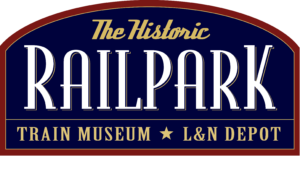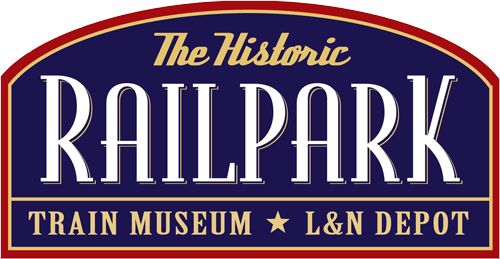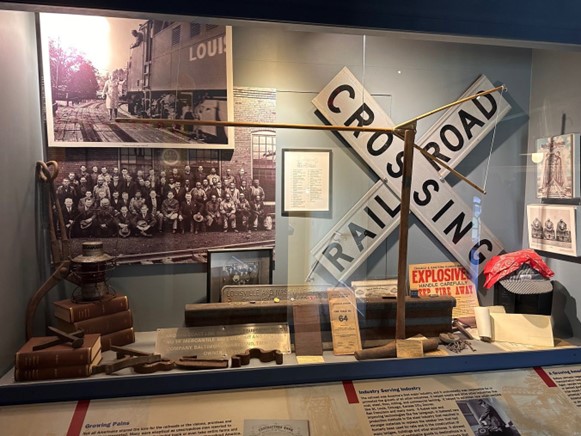A Students View – Travel Critique of the RailPark
By Louis C. Waddle III
We never get better if we are not willing to allow others to critique who we are and what we do. A few months ago, Western Kentucky University reached out asking if we, the RailPark, would be open to allowing some of his students to visit our historic attraction and participate in a class project that included a critique of our operations. Of course, we are always willing to provide WKU students with opportunities for real life learning. In this week’s blog post we will share some of the insight from Louis C. Waddle III.
Here’s what he had to say about visiting with us:
I had the distinct pleasure of visiting the Historic Rail Park & Train Museum in Bowling Green Kentucky. This attraction Consist of a multi-level museum with engaging exhibits and a dedicated theater, an event space, a charming model train exhibit encompassing a whole room, a gift shop, and the train tour.
The museum was larger than expected, focusing mainly on the history of L&N, but also covered topics such as the golden age of rail, the history of the Porter, and the impact of the rail system on culture during the great depression. The museum was filled with historic artifacts and informative and dynamic placards. These placards were easy to read and understand while also being informative, I found it hard to not want to continue reading. In the back corner upstairs there’s a dedicated theater, at the time of visiting, it was playing an interview from a Porter who worked for L&N. I learned that porters worked seemingly impossible hours with no or little breaks. Historically being a position held by freed slaves or black Americans, these men were undoubtedly exploited, however were still envied by their community. This was because it was one of the few distinguished jobs available to African American men at the time. Porters were some of the first to establish the Black middle class.
After I was done perusing the exhibits I killed sometime between the giftshop and the model train exhibit. I found it refreshing that the gift shop wasn’t filled exclusively with cheap swag and toys solely catered to children. The gift shop had high quality local wares, they also sold vintage stationery, old books, and vintage L&N magazines. It was obvious that the gift shop was intentionally catered to their two primary target audiences, History buffs, train enthusiasts and families with young children. It included items that catered to young children like cap guns and other train themed toys, while also including authentic historical material, and high-quality merchandizing.
One of the most enjoyable portions of the building itself is the train model, with miniatures that replicated the city of Bowling Green. The whole thing took up the whole room and is full of delightful details like the Nehi Soda bottling building. This exhibit reminded me of building model trains with my grandfather and elicited a strong nostalgic response. As I sat waiting for my tour, I pressed the button to conduct that miniature train around the tracks more times than I’m willing to admit.
As the tour started, I was shown into the event space which was the original whites only waiting room. It was a stunning space with large, vaulted ceilings and is now used for formal events and weddings. The tour was my favorite part second to the model train. I was fortunate to be the only one on my tour and my guide who was part of the historical society. He went above and beyond answering questions and telling compelling stories about the train cars. We started on the Train engine, and I was able to sit in the conductors’ chair and play out boyhood fantasies of manipulating tens of thousands of pounds of steel barreling down the rails. Even though the engine was removed from the car, there was a ton of information on what the engine looked like, the scale and how it powered the engine car.
The Next car was the Mail Car, where I learned about how they sorted mail, how they executed ‘mail on the fly’ and the mascot of the car, “Owney” a dog who is stuffed and on display at the Smithsonian. I learned that these wooden cars full of letters were surprisingly prone to fires. Also, that they acted as a buffer between the engine and passenger cars, and any accidents resulted in high mortality rates. During Owney’s tenure on the mail car, they had no accidents, so he was seen as a Goodluck cham.
The final cars were the passenger cars, the Dining car, the galley car and finally the custom car made for the President of the L&N railway. This section is where the tour shined, without much imagination I was able to imagine what it was like to be a passenger traveling along the rail. It was interesting to see the distinct difference in accommodations between 3rd class, business class, first class and the president’s car. It was also interesting to see how the basic accommodation was better than any commercial first-class plane ticket I have purchased. I was told by the tour guide that this was on account of the ride being so rough that space was needed for the same level of comfort.
I came into this experience with little expectations and was presently surprised along the way. This attraction was charming in every aspect and the effort of the historical society was palpable. Everything in my overview is applicable to this section and I have no additional comments on anything negative. This isn’t a huge exhibit but is exactly what It needs to be. I was made aware that they were working on additional train car restorations, but that didn’t leave me wanting anything more. Everything was clean, friendly, thorough, and catered perfectly to their target market. This is the perfect way for a history buff, train enthusiast, or young family to kill an afternoon and learn a few things along the way.


